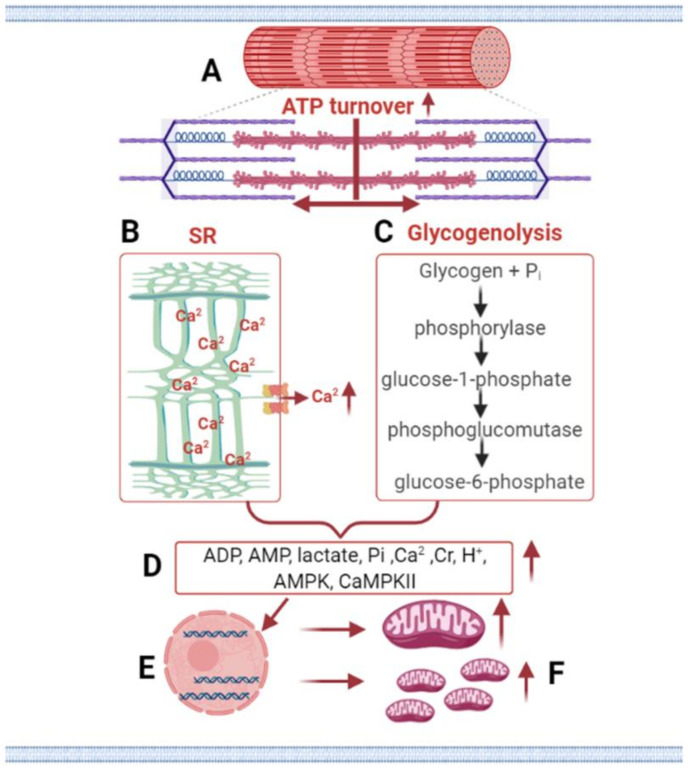Figure 4.
Schematic of the main signaling pathways through which high-intensity exercise elicits greater mitochondrial adaptations compared to lower intensities of exercise. Exercising at a higher intensity requires greater adenosine triphosphate turnover (A) and increases calcium release from sarcoplasmic reticulum; (B) carbohydrate oxidation, particularly from muscle glycogen, dominates at higher exercise intensities, compared to exercising at a lower intensity. (C) This results in a greater accumulation of metabolites, such as adenosine diphosphate, adenosine monophosphate, lactate, inorganic phosphate, creatine, calcium, hydrogen ion, adenosine monophosphate-activated protein kinase, and calcium/calmodulin-dependent protein kinase II, (D) causing greater rates of gene expression, (E) which promotes greater mitochondrial protein synthesis rates and greater mitochondrial content. (F) ADP, adenosine diphosphate; AMP, adenosine monophosphate; AMPK, adenosine monophosphate-activated protein kinase; ATP, adenosine triphosphate; Ca2, calcium; CaMPKII, calcium/calmodulin-dependent protein kinase II; Cr, creatine; H+, hydrogen ion; Pi, inorganic phosphate; SR; sarcoplasmic reticulum.

